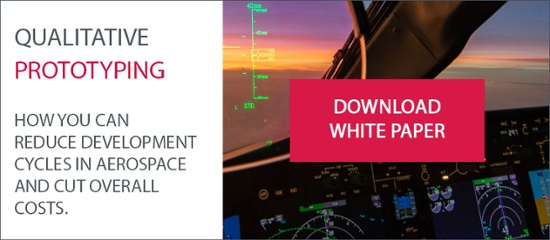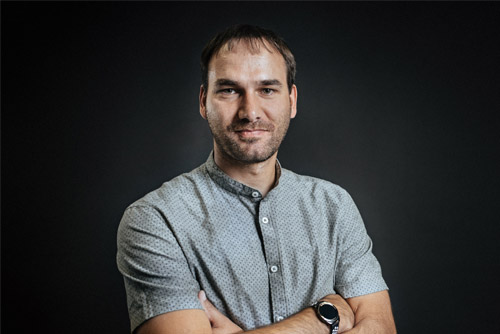In 1927, Charles Lindbergh flew his plane "Spirit of St. Louis" the 5,800 kilometres from New York to Paris in 33 long and lonely hours. Not quite 50 years later, Concorde covered the same distance in an incredible three supersonic hours. Flying is something we take for granted today, and we seldom take the time to appreciate the extremely complex engineering and development know-how that goes into each and every innovation. In aerospace engineering, too, digitalisation has paved the way for new technologies. It influences not only development and production, but flight operation itself. This results in valuable synergies, which in turn generate new abilities and innovative knowledge that can be used in many other fields and projects within this industry. EDAG aeromotive GmbH, an EDAG Group subsidiary, uses state-of-the-art development technology and already has its focus on safety, reliability and guaranteeing quality in the pre-development phase. We are convinced that professional pre-development and adherence to standards can help to reduce development cycles and therefore cut costs.
Qualitative prototyping – far more than just a trend.
As aerospace engineering is of an unparalleled complexity, the cycles from development through to the finished aircraft - in which millions of components are involved - can last up to a decade. On top of this, there is the safety aspect: the high safety standards prescribed by law result in sometimes extremely restrictive requirements and certifications for specific companies, and therefore long approval procedures, which in turn leaves avionics developers with little alternative than to create a proprietary system and software architecture.
DO-178C, a directive governing the certification of avionics software, is standard in the safety-critical area of aviation, and also the standard for software development required by international safety authorities such as the FAA and EASA. In order to provide proof that, here too, these guidelines have been adhered to, complete documentation is absolutely essential in the development processes. In spite of all of these complex requirements and conditions for a software project, the development of complex prototypes is consistently underestimated. Even though qualitative prototyping could offer manufacturers the guarantee of the smoothest possible transition into mainstream development.
As in any industrial sector, the pressure to become faster and more effective, to shorten development periods and therefore reduce costs is also growing here, which in turn is made more difficult by the increasing complexity of the projects. Particularly when it comes to software, the poor readability of the development environment, i.e. of the tools that are being used for the development of a software system and which have to work together, often poses a problem, as these tools cannot then be reused and utilised for the development of further prototypes.
The developers then generally resort to well-known solutions such as:- Agile iterations
- Design patterns (software engineering)
- SOLID (software development principles)
- Clean code (software development principles)
Even though they could be put to very good use in the sensitive field of avionics, project synergies are often not used, and the tools implemented and/or development tools not properly mastered. Project structure and performance are essential for qualitative pre-development and the subsequent carryover into mainstream development.
For all the theory, we are talking here about prototypes in the field of avionics which are supposed later to become fully-fledged systems. This is the reason why good and complete documentation in pre-development and good recognisability for the actual system are absolutely essential for development teams. This enables errors to be kept to a minimum or ruled out, which in turn has a beneficial effect on cost and development time.

From innumerable projects, we know that certain workflows and processes are important if we are to guarantee that a high-quality prototype will ultimately be adopted and can then be continuously improved, in this way offering a clear added value. It goes without saying that we always work in very close cooperation the customer, whose know-how is also needed in such development projects. Then again, we have specialised in the field of avionics, are familiar with the problems that can occur, and know exactly how to deal with them: feature by feature, to the highest quality possible, with as little iteration as possible, so as to keep costs low, but at the same time ensure they are designed to be modular, i.e. reusable. Know-how that might serve as the foundations for future developments can be built up in this way.
In many areas, EDAG has precisely this profound knowledge and many years of experience to enable us to create just such foundations. And it is not as though we concentrate on just the one section of development; on the contrary, our aerospace engineering skills enable us to take a holistic view of developments. This means that we can assist you with the creation of qualitative foundations, advise and train you, and confer with you on the choice of appropriate tools for your software development. You will receive a clear project structure that is well documented for third parties, that reduces development times, and in this way keeps the cost stable and predictable.
What is more, the use of new technologies will not stop at aerospace engineering. The use of virtual reality, augmented reality and mixed reality has long been standard practice in development and production. In the field of education, for instance, simulators are used to train young pilots, aircraft mechanics and engineers.
Vehicle manufacturers use this technology for their head-up displays, which provide the driver with direct but static information on the current speed limit, outside temperature, etc. by projecting it onto the windscreen. It is also already being used in avionics for defence & space to provide pilots with the most important data by projecting it directly onto their helmet visors, interactively with their line of vision. Unlike in the field of education, however, real information is shown here, so this is not pure simulation. For the development, here too, the choice of the right tool was all-important: we made successful use of Unity for the prototyping.
You can find out more about our project and the interaction of augmented reality and avionics in our "Qualitative Prototyping" white paper, which is available for download free of charge.
Our expert, high-level software developer Bastian Westphal and his team can answer any questions you might have about the professional pre-development of prototypes. He knows what you should pay attention to, what can go wrong, what advantages it will bring you and what you can improve – no matter whether you want to develop a parcel drone or an air taxi.
Download our free white paper now!






